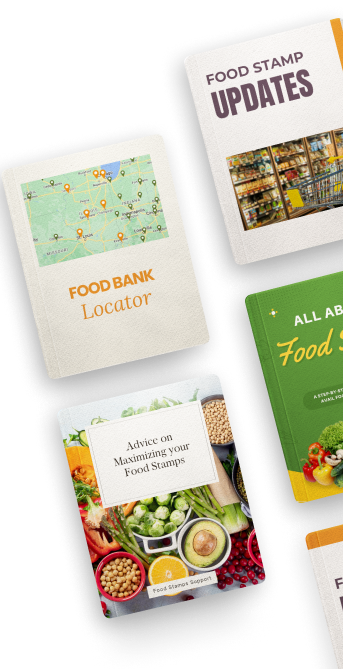Your Handy Guide on Food Assistance Programs

The Supplemental Nutrition Assistance Program (formerly known as food stamps) are government-issued benefits that help low-income families and individuals afford meals.
There are different types of SNAP benefits, each with their respective eligibility requirements. These requirements depend on the state in which you reside.
The Department of Agriculture (USDA) administers these SNAP benefits through financial support from the federal government.
The following is a layout of the two different aspects of this unmatched government program that have addressed the country's food security for the longest time:
Types of Food Stamps:
1. The Regular SNAP
Regular SNAP benefits consist of a monthly allotment of financial assistance given through an Electronic Benefits Transfer (EBT) card, which is then used to purchase food at participating stores.
Eligibility for regular SNAP benefits depends on your household size, income, and assets.
To apply for the regular SNAP program, you must:
- Complete an application form
- Submit the form to your local SNAP office
- Participate in an interview with a SNAP representative
After approval, you will receive an EBT card, a list of participating stores, and a monthly allotment of SNAP benefits.
2. The Emergency Food Assistance Program (TEFAP)
The Emergency Food Assistance Program (EFAP) provides a one-time allotment of food stamps for purchasing food at participating stores.
Eligibility depends on your household's need and size. Individuals may apply online or through a local office.
It's also important to remember that these benefits are valid for a limited time only.
Other programs that support food security include:
1. The National School Lunch Program (NSLP)
The National School Lunch Program (NLSP) is a meal program implemented in public and nonprofit private schools and residential child care institutions.
Currently, the NSLP serves more than 30 million children every day.
In addition to providing nutritious meals, it helps reduce food insecurity and hunger among children.
Studies have shown that students participating in the NSLP perform better academically and maintain commendable attendance rates.
The program also helps to instill healthy eating habits in young people, setting them on a path to lifelong wellness.
For all these reasons, the NSLP is essential to the nation's commitment to supporting our children's health and well-being.
2. Child and Adult Care Food Program (CACFP)
The USDA Foods Congregate Feeding provides food to eligible child and adult care institutions through the Child and Adult Care Food Program (CACFP).
These institutions include daycare centers, after-school programs, homeless shelters, and other congregate feeding sites.
Through the CACFP, institutions can purchase various fruits, vegetables, meats, poultry, fish, dairy products, grains, and other items at reduced prices.
In addition, it offers special ordering options for institutions that serve many children with special dietary needs.
3. Summer Food Service Program (SFSP) - Disaster Response
The Summer Food Service Program (SFSP) provides free meals to children and teens 18 years of age and younger in areas affected by disasters.
The program operates under USDA through state agencies, local organizations, and tribal governments to ensure that children continue accessing required meals during school days and holidays.
SFSP - Disaster Response sites can provide meals up to 21 days after a disaster declaration.
Meals are served in group settings, such as schools, community centers, or churches. However, the facilitators use mobile feeding sites to reach children in rural or difficult-to-serve areas.
They also set up feeding sites in areas where children congregate, such as parks, playgrounds, and housing developments. The program is flexible to meet the needs of disaster-affected communities.
In addition to providing nutritious meals, the program also offers socialization and recreation opportunities to children recovering from traumatic events.
The program helps to provide a sense of normalcy and routine during a chaotic time. Contact your local USDA office or state agency to find out the availability of these services in your area.
The government offers various food assistance programs to help low-income Americans access nutritious, affordable meals. The programs listed above are a few of the many options available.
Contact your local USDA office or state agency for more information on food assistance programs. Since the government cannot access everyone in need, you must spread the word and help those in your community struggling to put food on the table.












